The anatomy of bees tells about head, chest and abdomen. Outside, it is covered with a hard skin, which includes a special ingredient – chitin. Skin of bees consists of three layers: a base plate (basement membrane), the inner layer (epidermis) and the outer layer (cuticle). The composition of the cuticle is chitin, a substance which is persistent and at the same time soft and flexible. Much chitin accumulates around the joints. muscles and internal organs attached inside to chitinous cover, so chitinous cover of bees also called an exoskeleton. In addition, the whole body is densely covered with hairs of bees of different form and function. Parts of a honey bee: 1 – antenna, 2 – proboscis, 3 – the front wing, 4 – rear wing, 5, 6, 7 – front, middle and rear legs, 8 – abdominal semiring, 9 – dorsal semicircle, 10 – abdomen, 11 – head, 12 – chest.
Bees head consists of a solid chitinous box having two openings – mouth and neck. Located within the head ganglia, from which runs the nerves to the senses, muscles that move antennae, mouth parts and the head, glands secreting substances necessary for life of bees. On the sides of the head there are two large compound eyes, consisting of many individual small buds – facets. Eyes of bee: A – a simple eye of bee in longitudinal section: 1 – lentils, 2 – cells of the retina, 3 – pigment, 4 – interstitial cells, 5 – nerve.
B – compound eye of the bee in the longitudinal section: 1 – cornea, 2 – layer lens, 3 – layer of the retina, 4 – optic lobe. On top of the head, there are three simple eyes! Bee sees objects in the far distance with compound eyes , it is guided during retrieving flowers, it distinguish color and shape of them. Bee sees with simple eye near, for example, when working on a flower or the honeycomb cell. Two segmented antennae are affixed to its forehead . Numerous olfactory and tactile organs bees are on the antennae.
The head of the working bee: 1 – mandibles (upper jaw), 2 – tentacles, 3 – lower jaws, 4 – tab, 5 – spoon. Lower jaws, tentacles and tongue form a proboscis – 6. Mouth parts of bees are complex. Upper lip hangs ahead, on the edges of it are paired upper jaws or mandibles, with which bee gnaws caps cells when leaving them, cleans cells, builds honeycomb, removes hive’s dirt, opens caps from sealed honey, etc. Then there is the bee proboscis, which consists of the lower lip and two complex lower jaws. Bee collects liquid food – nectar, honey with proboscis. The extended portion of the proboscis – tongue is thickly covered with hairs, and ends with a spoon. Bee downs the proboscis to the nectar on a flower and licks it with the spoon. Nectar rises on the tongue, covered with fine hairs, like the fluid on the wool thread. The tongue is covered with tentacles of bottom lip and blades of the lower jaw, and tube is formed by which nectar passes on and is absorbed in the mouth, just as we pick up liquids through a glass tube, nectar comes from the mouth through the esophagus to the honey goiter. Proboscis structure allows bees to increase and decrease lumen of the tube depending on the density of feed, the denser food, the greater the diameter of the tube is formed. At rest proboscis develops in the lower part of the head. Proboscis of bees on average is equal to 6.5 mm (0.25”). Northern bees’ proboscis shorter than the south bees’. Bee with a long proboscis can get nectar from flowers with long narrow tubes, in which the nectaries are at great depths. In addition to the length of the proboscis, it is important how deep the bee can move a head in a tube of a flower while collecting nectar.
Breast of bees consists of four rings, tightly interconnected. Each ring consists of dorsal and ventral semirings. In breast of bees there are highly developed muscles that drive the legs and wings, the respiratory system, through which gases exchange, nerve center, which run the nerves to the organs of motion, and cancer. Three pairs of legs are attached to the bottom side of the chest : front, middle and rear. Each leg consists of five major segments: thigh, trochanter, femur, tibia and tarsus, consisting of five small segments. Front (A and B) and average (C) feet of the working bee: 1 – scallop cleaner antennae, 2 – spike ( valve) clamping mustache in the comb during their cleaning 3 – eye cleaning brush; B – cleaning machines for antennae on the front leg, 4 – spur to drop lumps of pollen from shin rear legs. On the first segment of the front foot of the bee there is an arched cut, lined with short hairs. At the lower end of the tibia is a valve which can cover the cut. This device is used to clean the bee antennae. Bee puts a mustache in a cut and close with valve and by moving back and forth it clears mustache. On the first segment of the rear foot of the bee, inside, there is a series of hairs forming a brush for cleaning the body from the pollen.
Rear foot of working bee: 1 – brush of the back legs, 2 – leg-cover in a basket, 3 – basket. Between the tibia and the first tarsal segment on the back leg of bee there are pollen tweezers, serving to pollen formation and placing it in the grooves-baskets, located on the outer side of the tibia. Basket has at the edge long, elastic bristles, slightly curved inwards. The bees form pollen into pellets in them and transferred it to the hive. While visiting flowers beу is sprinkled with pollen, which is trapped between the hairs covering her body. Using brushes on the legs bee collects it from the body, wets with saliva and nectar, that’s why it becomes more sticky, and places in baskets of rear legs evenly on the right and left sides. It takes the form of a flattened pollen ball and it is well kept in hairs while bee flying. In the hive bee puts pollen in the folds of the cell. The queens and drones have no baskets, brushes and clippers pollen on their hind legs. The bee has two pairs of wings, which are attached to the chest. The front pair of wings is more than the back pair and covers it in a calm state. When flying both wings engage and act like a wing. Bees can fly away from the apiary at a distance greater than 5 km, but productive flying for a nectar is less than 3 km. Bees flying speed depends on the load, which it has, the strength and direction of the wind, which she has to overcome, and etc. It is believed that the empty bee can fly at speeds up to 65 km per hour (40 mph), and with a load of nectar and pollen – 20-30 km (12-19 mph). On average, during one flight a bee brings 30-35 mg of nectar or 12-15 mg of pollen. Under favorable conditions, in sunny and calm weather healthy bee can fly with a load equal to three-fourths of its weight. The farther away a bee flies for nectar, the less it brings the nectar and pollen. With weak collecting of nectar bee may eat most of the collected nectar during the flight, and very little to bring it to the hive.
Abdomen of the working bee and queen consists of six clearly distinguishable rings, and a drone has seven, each ring consists of a large dorsal abdominal and lower semicircles. All rings and half-rings are connected by thin membranes. Thanks to this device abdomen has high mobility.Bee can expand it, bent, cut and lengthen. In the abdomen of bees there are organs of blood circulation, respiration, digestion, excretion, sex organs, and the sting and the ganglia, from which all the nerves of the abdomen run. Blood of bees is driven by heart, arranged in a form of tube in the dorsal part of the abdomen. From the heart blood is pumped into the aorta that passes through the chest to the head and there it ends. Bee does not have other blood vessels. Blood is poured freely from the aorta to the head, slowly flowing in the chest and abdomen, washing all located on the way the body’s organs. In the abdomen, it is served by special diaphragm to the heart and then sucked by it. Air enters the body through special bee holes – stigma, then by ducts – the trachea it goes in the air sacs and from them it goes to a densely branched network of small trachea. These tubes are located between the various bodies of the abdomen, and there is the exchange of gases with the blood washing them. Excretory organs bees – Malpighian tubules – consist of a few dozen tubes that go with its open base into the lumen of the small intestine.
On four abdominal semirings there are wax glands. Bees wax glands: A: a – abdominal segment of bees wax and it mirrors (1), b – wax plate. B – Bee (ventrally) b – plates of wax protruding from under the segments of the abdomen. B – bees wax glands: I – newborn bees wax glands; II – wax gland of 18-day bee, 1 – epidermis cells, 2 – cells of wax glands. At each of these semirings there are two glands, the surface of which forms the transparent chitin fields – wax mirrors. Cells that are located inside the wax mirrors secrete wax. Bees wax glands begin to develop from the first days of life, and at the age of 3-5 days thin layer of wax can be found on the mirror . It is best to release the bees wax in age from 12 to 18 days. Old flying bees do not secrete wax. Wax is produced in the cells of wax glands, and then it seeps to the outside of the mirrors and it cools in contact with the air, forming a thin, white, easily visible to the naked eye wax plate. They are so small and thin that one kilogram of up to 4 million of them. Simultaneously on eight wax mirrors eight wax platelets are formed. Bees secrete wax only while bringing nectar and pollen to a hive, wax secretion is closely linked with the education of the brood. The more bees raise brood, the more they can distinguish the wax. Secreting of wax and building of combs occurs in the hive if a nest has free, not built-up with combs, space. Those families build good honeycombs who have a lot of young bees, abundant supply of food, and space for tuning combs. Honeycomb construction is usually done from the top down and is going well, when the temperature inside the hive is +35 ° C (95 F). During good harvest in a nest filled with combs, secreted wax is put in the form of lumps, to strip frames and wall hives. Just built comb is white, but after a long stay in the nest it is coated with propolis and turns yellow. Following the withdrawal of the bee there is a cocoon in each cell, tightly adhering to the bottom and walls of the cell. Gradually accumulated in the cells, these cocoons make a cell brown colour at first , then dark. Most bees excreted in the autumn, the wax glands do not develop, remain under a long rest and do not secrete wax until spring. In spring, bees wax glands that did not develop in the autumn, under favorable conditions, develop and releas the wax.
Bee sting is the body protection. It is only in bees and queens. Bee uses it to protect the nest. Queen need sting when laying eggs and during the fight with the other queens. While bee is calm, it is hidden under last segment of the abdomen. The structure of the sting is very complicated.When bee stings its abdomen flexes and it pushes forward stilettos – thin needles with indents at the end which pierce the skin and deep into the body, and poisonous liquid produced in the two poisonous glands drains the wound. Bee venom causes pain and swelling. You can not remove the stinger from the wound because indent stilettos do not let it back. When bee tries to fly, sting comes off with the body parts of the bee with other internal organs, and the bee dies. Sting, cut off from the body, continues to move independently, gradually going into the wound and pours into it stock poison. Beekeeper gets used to stung, and the body becomes very receptive to bee venom. Bee venom from several bees is not dangerous to humans, but even one sting causes severe headache, urticaria, fever, vomiting, and so on for some people who have allergy. Such people should not engage in beekeeping. Sting needs draining from wounds immediately. You can not pull the stinger with two fingers, as if you press the wound you pour the remains of the poison. It is better to gently squeeze the sting with the finger nail from the wound. Then the wound should be lubricated with honey, so smell of the poison doesn’t irritate bees. Bees have different levels of mild, southern bees like to sting less than the northern. By selecting the manufacturers you can multiply highly duplicated family of bees that sting less.










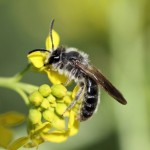
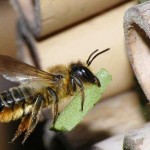
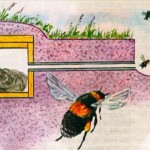
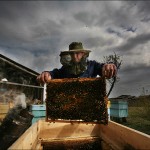
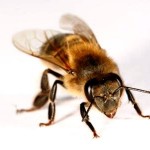

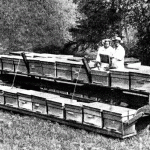
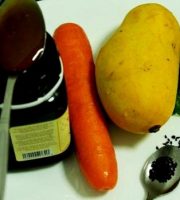

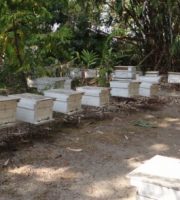
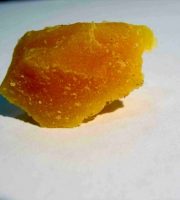
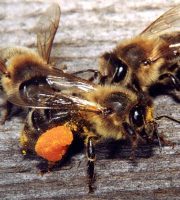
Anatomy of bees